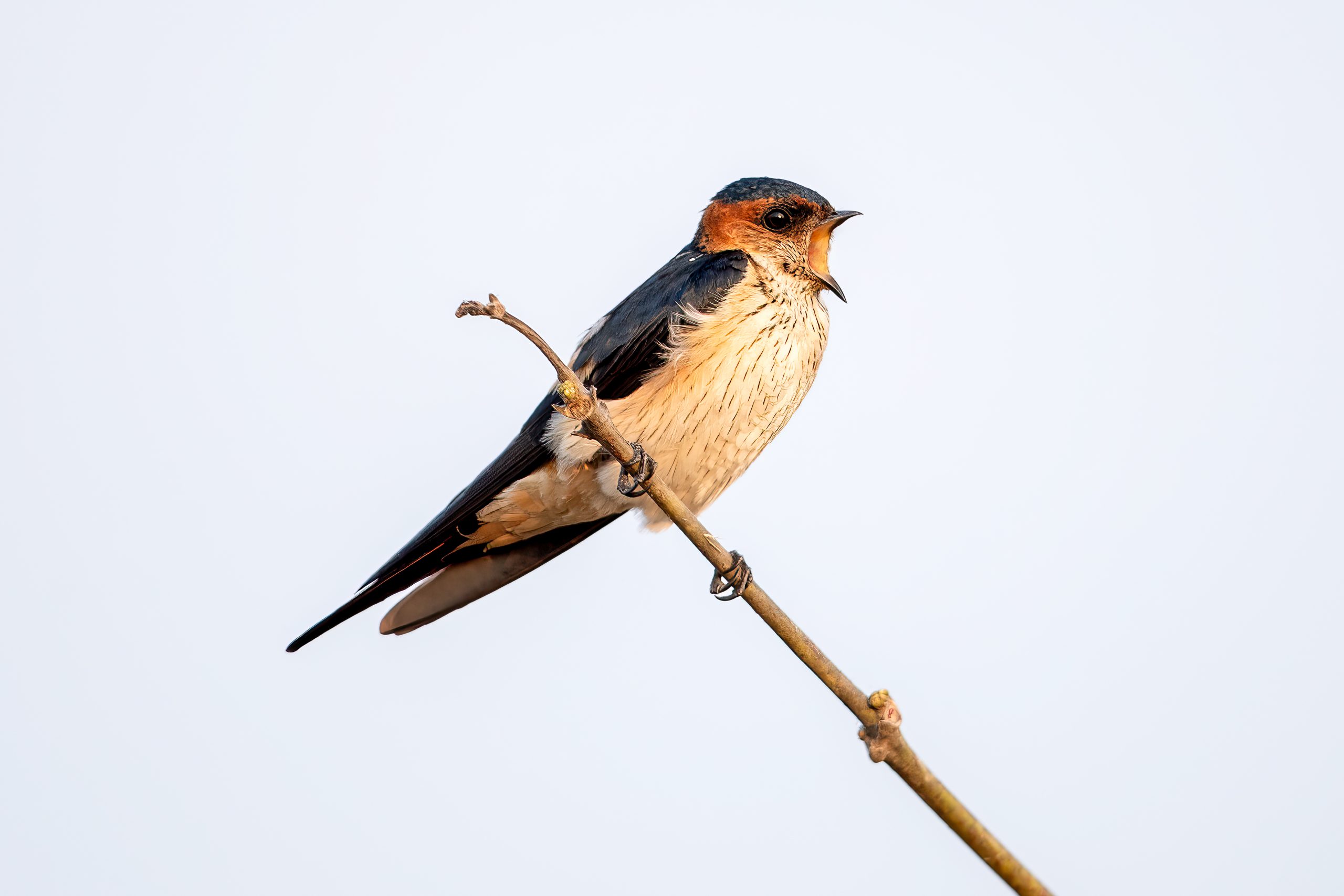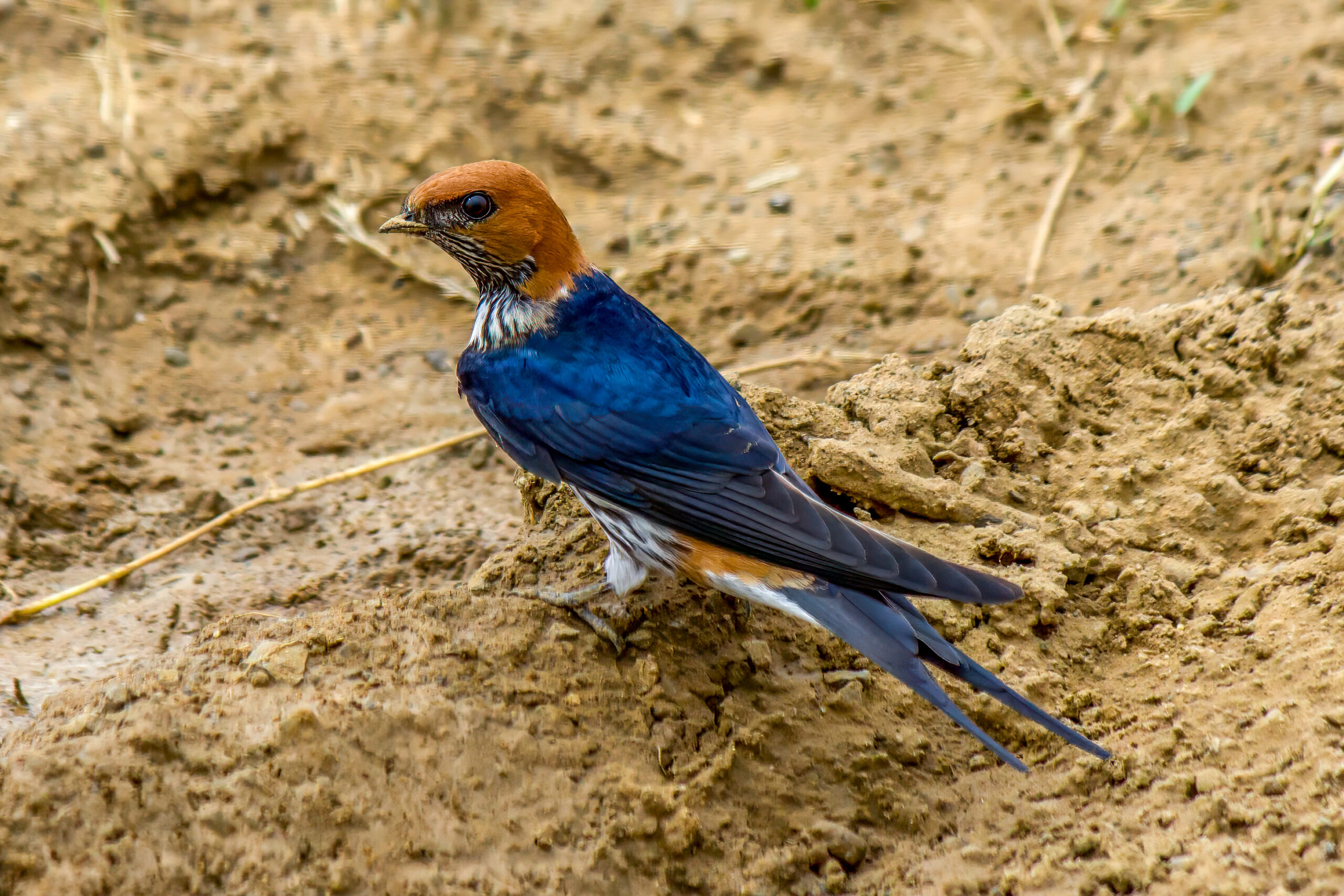Description
The barn swallow (Hirundo rustica) is the most common and widely distributed species of swallow in the world. It is found extensively on all continents, except Antarctica. It is notable for its sleek shape and long, forked tail. It measures about 17-19 cm (6-7-7.5 in) in length and has a wingspan of 32-34.5 cm (12.6-13.6 in). The upperparts are glossy blue-black, while the underparts are a pale buff to white. A striking feature is the reddish-orange forehead and throat, contrasting with a dark blue-black band across the upper chest. The tail is deeply forked, more so in males than females.
It can be distinguished from similar species, like the cliff swallow (Petrochelidon pyrrhonota) in America, or the slightly less similar house martin (Delichon urbicum) in Europe, by its longer, more deeply forked tail, and different underpart coloring.
Diet & habitat
Barn swallows are found in a variety of open habitats such as fields, parks, and wetlands. They prefer areas where foraging for flying insects is easy – their primary food source. These birds catch insects on the wing with their agile and acrobatic flight, often seen swooping over fields or water. They are known to drink and even bathe by skimming close to the surface of water bodies. Barn swallows have a mutualistic relationship with humans, as they consume insect pests, making them beneficial for farmers.
Migration
Barn swallows are long-distance migrants. They spend their summers in the Northern Hemisphere, where they breed, and then migrate to the Southern Hemisphere for winter. These birds are known for their remarkable endurance and navigation skills during migration, covering thousands of kilometers twice a year. Some can travel from northern Europe all the way to southern Africa.
Nesting
The breeding season for barn swallows typically begins in late spring to early summer. They are monogamous and often return to the same nesting site each year. Nests are cup-shaped, made of mud and grass, and built on beams or ledges in barns or similar structures. They are therefore often seen living next to human habitations. Males return to the breeding grounds before females and find a nest site, which it advertises to the female through flight and song. A female usually lays 4-6 eggs. Both parents share incubation duties for about 13-17 days. After hatching, both parents feed the chicks for 18-23 days until they fledge. The young are dependent on their parents for a few days after leaving the nest.
Status
The barn swallow is abundant and common worldwide. However, populations in some areas are declining due to habitat loss and changes in agricultural practices. Conservation efforts are focused on preserving their habitats and nesting sites. It is listed as least concern on the IUCN Red List.











